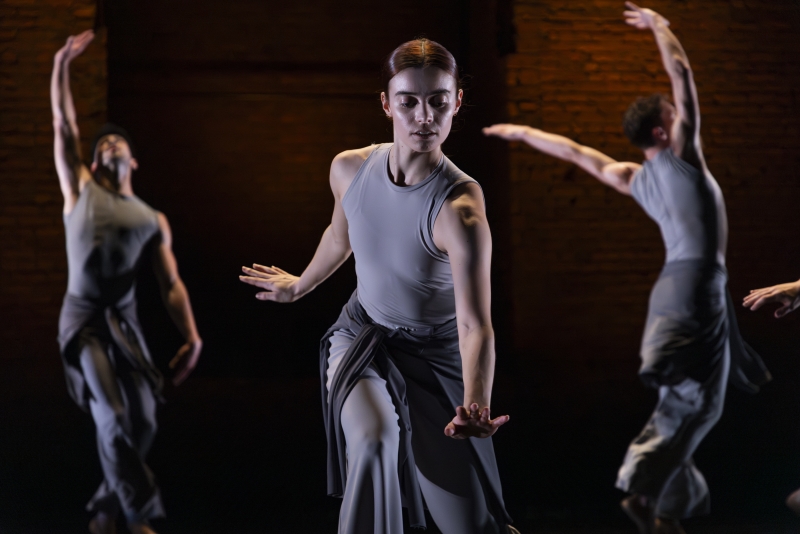Review: Gibney Company Lets Art be Art
The company's Spring showcase, featuring three works, is two hours of creative self-expression unfolding with all of its quirks, flaws and daring attempts.

In a moment when nearly all art has either an uber-famous name attached to it or hyper-social consciousness, art for the sake of art is refreshing. Gibney Company at the Joyce Theatre, running May 06-11th, is just that; two hours of creative self-expression unfolding with all of its quirks, flaws and daring attempts.
Featuring works from Roy Assaf, Peter Chu, Lucinda Childs, the program is different, rather than diverse, and presented rather than performed. Each piece is bracketed by a 15 minute intermission in which audiences can reflect, however uneasily, about what has just been shown and how it defies most of the lexicon, yet still lands solidly in the contemporary genre. 
Assaf’s A Couple is an oftentimes chaotic, romp through a vague relationship. When it is not flaily or frantic, it is unfailingly sincere and sassy. Performed by a revolving roster of duos throughout its run, one can wonder how different dancers might react to the piece’s focus on the bizaredly intimate. How might a slap in the face, a sweet caress, a game of chase feel different when the duo is entirely male-indetifying? Or not? It’s a curious thought that gives the piece depth and distracts from its strange habit of forcing the dancers to break the fourth wall to offer the audience useless context.
Opening with A Couple isn’t quite the right appetizer for Chu’s Echoes of Sole and Animal. A true showstopper, the work personifies various animals in its homage to Chinese qi gong and taiji principles to create an effortlessly cool, futuristic dystopia. The movement is defined by ankles that appear totally broken, arms that beat like wings, and ensembles that pulse like an amoeba. Intricate and intentional, every choice tells the story. Every dancer is part of an ethereal yet human thing that unfolds to a pulse-pounding sound design by Djeff Houle. When the final dancer walks across the stage on all fours, shoes on their hands like a horse’s hoof, there is a sense that a journey has been had.
 Closing with Child’s Three Dances (For Prepared Piano) leaves audiences with a piece that is creative in concept if not execution. Set to John Cage’s various prepared piano pieces, the work is a minimalist interplay between dance and song, particularly how repetition can help convey meaning. That context is compelling, and elevates straight lines and thematic overtures into something with more gravitas. The work is pretty, almost dainty, with truly stunning and thoughtful partner work and staging. It is awash in gray, unfortunately, denying it the chance to use colorful costuming to underpin its conceptual attachment to patterns.
Closing with Child’s Three Dances (For Prepared Piano) leaves audiences with a piece that is creative in concept if not execution. Set to John Cage’s various prepared piano pieces, the work is a minimalist interplay between dance and song, particularly how repetition can help convey meaning. That context is compelling, and elevates straight lines and thematic overtures into something with more gravitas. The work is pretty, almost dainty, with truly stunning and thoughtful partner work and staging. It is awash in gray, unfortunately, denying it the chance to use colorful costuming to underpin its conceptual attachment to patterns.
Gibney’s dancers are deft and athletic, easily able to make each work feel technically savvy. Though it may be that art in its purest existence, devoid of easily marketed messages or names, is merely the best vehicle for talent.
Tickets start at $12 and are available for purchase joyce.org
Reader Reviews
 | |||
Best Sound Design - Live Standings | |||
| |||
| Vote Now! |
Videos

